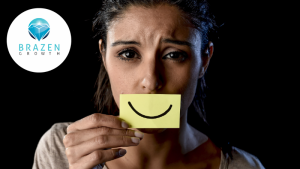The benefits of physical activity and healthy eating behaviours for physical and mental health are well documented. The Department of Health has published guidelines for recommendations of physical activity levels and dietary requirements for various ages. On average, it is recommended that 18-65 years old’s participate in 2.5- 5 hours of moderate activity per week or 1.25- 2.5 hours of vigorous activity per week.
Your Mindset About What is Healthy or Unhealthy
It takes a decision to start participating in anything. All actions or behaviours begin with a thought. I believe that in order to determine if a person has crossed the line from healthy to unhealthy behaviours when it comes to diet and exercise, we need to look at their thoughts about themselves. It may be negative thoughts that are the cause of unhealthy eating and unhealthy levels of exercise.
For example, a professional athlete may train and compete for double or triple the recommended time in the guidelines for physical activity. But, does this constitute excessive exercise? They may eat appropriate amounts of all the food groups to fuel their bodies for this level of participation. So the answer to this question, is probably no.
Crossing the Line
Crossing the line from healthy to unhealthy behaviour begins when anyone, athlete or the average person, start fuelling their mind with unhealthy thoughts about themselves. The thought ‘I need to improve my speed’ is very different to ‘unless I perform I am not valued or loved’. Often it is a traumatic event that may cause feelings of guilt and shame that lead to negative self-thoughts.
What Unhealthy Eating and Exercise Habits Actually Are
Unhealthy eating and exercise habits can become a means of dealing with the festering mess within the mind. Eating disorders are complicated. They are not a vanity issue, or merely a body image issue. They can affect anyone. The line is first crossed in thoughts. Irrational fears and phobia’s manifest around diet and exercise, developing into an attempt to control issues people may feel are beyond their control.
Eating habits and food become tangled with emotions and feelings. Food is labelled ‘good’ and ‘bad’. Extreme anxiety, fear, guilt, shame and worthlessness are experienced if the unhealthy rituals are ‘broken’ or disrupted. Sense of worth for the sufferer is reflected in adhering to these rituals. The longer this continues, the harder these negative patterns are to break.
We can continue to try and treat the ‘seen behaviours’, and they need to be treated, but it is the underlying emotional issues that need to be addressed if true healing is to come. It is not merely a line that is crossed. It is a tangled mess of unhealthy levels of exercise and dieting that are motivated by unhealthy thoughts. It is not merely about learning to love your body but more about learning to love who you are.
Brazengrowth and the InsideOut Institute for Eating Disorders collaborated to put this list together. Check it out!



